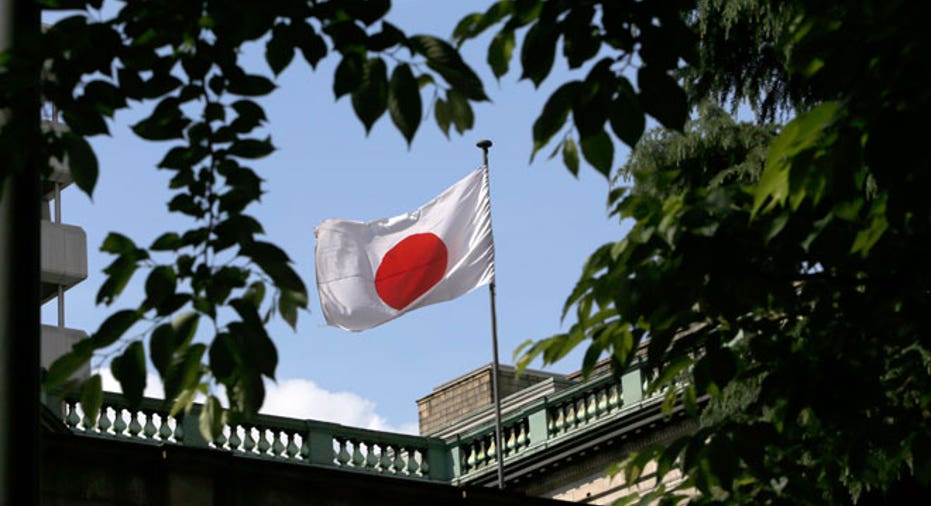Bank of Japan Unveils Massive Stimulus Plan

The Bank of Japan unleashed the world's most intense burst of monetary stimulus on Thursday, promising to inject about $1.4 trillion into the economy in less than two years, a radical gamble that sent the yen reeling and bond yields to record lows.
New Governor Haruhiko Kuroda committed the BOJ to open-ended asset buying and said the monetary base would nearly double to 270 trillion yen ($2.9 trillion) by the end of 2014 in a shock therapy to end two decades of stagnation.
The U.S. Federal Reserve may buy more debt under its quantitative easing, but with the Japanese economy about one-third of the size of the United States, the scope of Kuroda's "Quantitative and Qualitative Monetary Easing" is unmatched.
"This is an unprecedented degree of monetary easing," a smiling Kuroda told a news conference after his first policy meeting at the helm of the central bank.
"We took all available steps we can think of. I'm confident that all necessary measures to achieve 2 percent inflation in two years were taken today," he said.
One of those steps was to abandon interest rates as a target and become the only major central bank to primarily target the monetary base -- the amount of cash it pumps out to the economy. It adopted a similar policy in 2001-2006, but not on this scale.
The scope of the changes Kuroda pushed through, and the fact he secured unanimous board support for them, drove the yen down sharply, knocked the 10-year bond yield to a record low, and nudged Tokyo share prices just shy of a 4-1/2 year closing high.
"The result is nothing short of regime change," HSBC's Japan economist Izumi Devalier said in a report.
"The BOJ has now made a much firmer commitment to achieving its 2 percent inflation goal, and has demonstrated that it will do anything short of foreign-bond buying to achieve this goal."
The scope of Kuroda's overhaul offered immediate comfort to Japanese markets, but contains major risks.
It could leave the central bank heavily exposed to government debt and potentially huge losses if it failed to stoke inflation and investors lost faith in its efforts to revive the economy, and it could trigger a currency war as other Asian exporters seek to remain competitive with a weaker yen.
"It is as if we've gone back to the quantitative easing of the 2000s," said Hiroaki Muto, senior economist at Sumitomo Mitsui Asset Management in Tokyo.
"Targeting the monetary base will lead to a huge increase in current account balances that commercial banks keep at the BOJ, but I'm still not sure if this money will move through the economy."
Monetary base, or cash and reserves at the BOJ, already hit a record in March, but the huge pile of money has failed to end deflation or boost wages.
PERFECT ANSWER
Kuroda's first policy meeting since taking office on March 20 was seen as a big test of his ability to steer the BOJ towards unorthodox measures to meet the inflation target it adopted in January, and markets liked what they saw.
Government bond futures soared and the benchmark 10-year bond yield hit 0.425 percent, its lowest ever. The yen, which had been creeping up in the run-up to the meeting, plunged, driving the dollar up by more than 2 percent to around 95.25 yen from around 92.90 before the decision.
The Nikkei stock index unwound losses of more than 2 percent to end up 2.2 percent, just shy of a 4-1/2 year closing high hit last month.
The BOJ will buy 7.5 trillion yen of long-term government bonds per month, roughly 70 percent of bonds sold in markets. It combined two bond-buying schemes, its asset-buying and lending programme and the "rinban" market operation, to buy longer-dated government bonds, including those with duration of 40 years.
The central bank will also increase purchases of exchange-traded funds (ETF) by 1 trillion yen per year and real-estate trust funds (REIT) by 30 billion yen per year.
"I can say that the BOJ came up with a perfect answer in response to market expectations," said Junko Nishioka, chief Japan economist at RBS Securities.
"Kuroda made good on his promise of boosting monetary easing in terms of both volume and types of assets that the bank purchases."
Kuroda said the BOJ wanted to push down bond yields enough so that investors will start buying riskier assets, such as property and stocks, and to prompt households and companies to spend now rather than later on expectations of rising prices.
The central bank temporarily scrapped a self-imposed rule of capping its holdings of government bonds to the value of bank notes in circulation, despite reservations by some board members that doing so could nudge it closer to monetising public debt -- or directly underwriting government borrowing.
Kuroda brushed aside concerns that excess money printing by the BOJ will sow the seeds of a future asset price bubble, which was repeatedly mentioned by his predecessor.
"I don't see a risk of a sudden spike in long-term interest rates or a creation of an asset price bubble," Kuroda said.